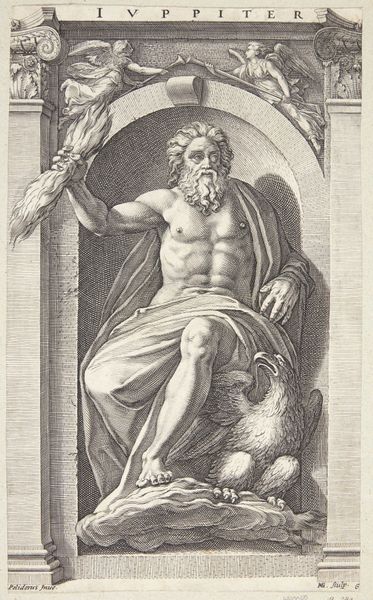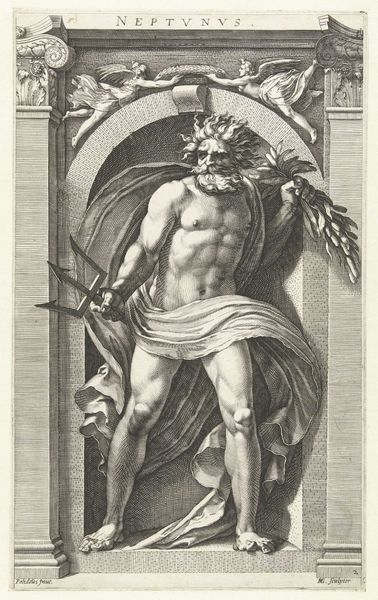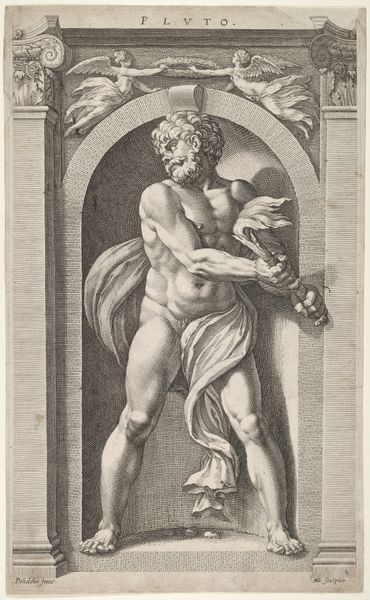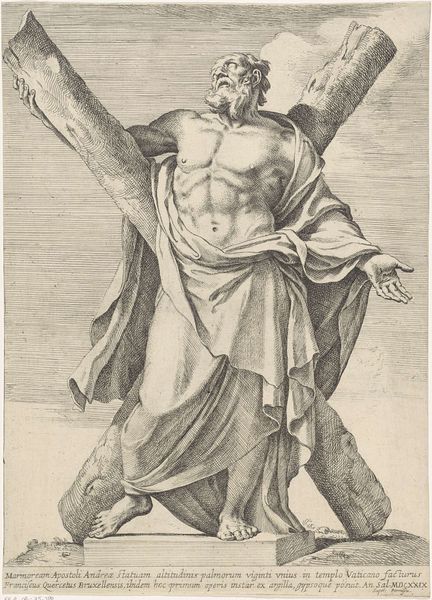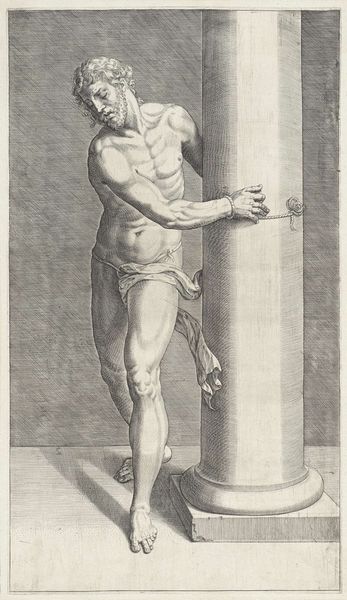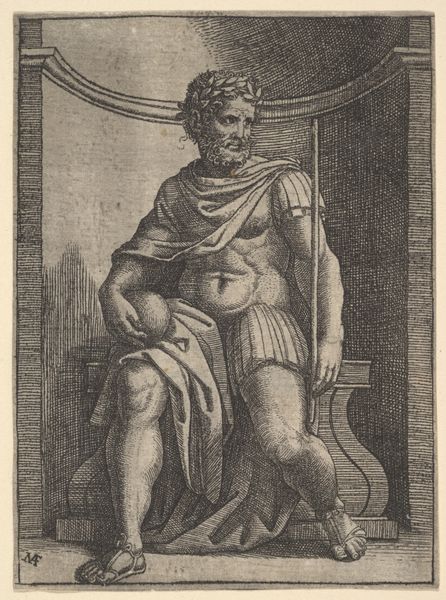
print, metal, engraving
#
portrait
#
baroque
# print
#
metal
#
greek-and-roman-art
#
old engraving style
#
figuration
#
line
#
history-painting
#
engraving
Dimensions: height 345 mm, width 215 mm
Copyright: Rijks Museum: Open Domain
Curator: Polidoro de Caravaggio’s "Vulcanus," a metal engraving dating back to 1613 and housed here at the Rijksmuseum, depicts the Roman god of fire and metalworking. Editor: My immediate impression is of immense strength rendered through incredibly precise, almost obsessive detail. The lines feel… purposeful, laborious. Curator: Indeed. The piece offers a commentary on labor through the figure of Vulcan, a god himself often excluded or marginalized. It could be argued the artist seeks to dignify physical work via allegorical means. He is depicted, semi-nude, powerfully muscled, clutching his tools. How does this visual portrayal intersect with broader questions of divine identity, Editor? Editor: Thinking about production: engravings required skilled craftsmanship, of course. The dense crosshatching suggests a lengthy, involved process of manipulating metal. You have to wonder about the physical demands involved; there is an element of craftedness to it. I'd be fascinated to know where these prints were consumed socially, their audience, and economic life as multiples. Curator: That point is vital because it opens avenues of exploring the democratization of art, something still far off for sure. And gender plays an inevitable role in our examination. The female figures in the background float, decorative almost. This raises an interesting question regarding patriarchal structures that elevate male labor while simultaneously relegating feminine contributions to mere ornamentation. Editor: Agreed. I look at those stylized bodies surrounding the rendering of a powerful working figure, and they point toward a gendered consumption of artistic labor. Were those floating figures part of the original design on which this engraving is based? That adds a layer of remove to the materials as part of a process of appropriation of craft skill itself, doesn't it? Curator: Absolutely, prompting questions about agency. Polidoro himself, by capturing such forms, possibly highlights, even unconsciously, prevalent biases present. Approaching artworks such as this then facilitates examining, confronting systems—essential acts in my opinion. Editor: Exactly, shifting perspectives! I find thinking through its means of making – the lines, the plates – makes this piece relevant. It roots it back into real lived contexts across its historic lives. Curator: It’s a complex interaction between material and myth, prompting a discussion about value creation. Editor: Ultimately an interplay, isn't it? Of skill and structure!
Comments
No comments
Be the first to comment and join the conversation on the ultimate creative platform.

